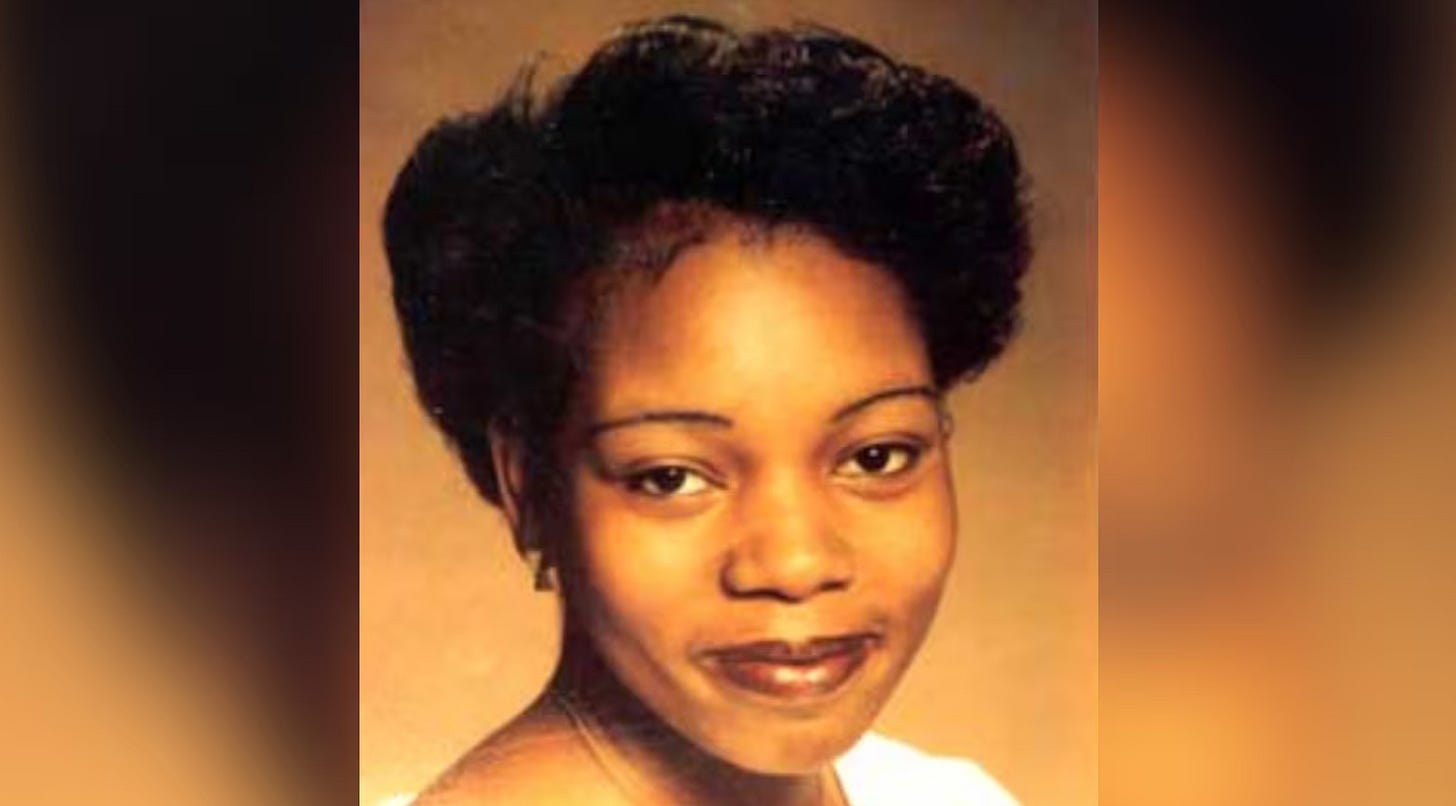The Long Shadow of a Disappearance: The Identification of Kimberly Lawanda Carter 🕯️
The Disappearance of Kimberly Carter
Even after decades, some stories refuse to be forgotten. Recently, the Independence Police Department confirmed what many had hoped: the remains found in 1988 in eastern Independence, Missouri, belong to Kimberly Lawanda Carter, a young woman who vanished in 1984. This revelation offers painful closure for her loved ones—and reignites both questions and hope in cold case investigations everywhere.
The Disappearance: July 5, 1984 📅
On July 5, 1984, 19-year-old Kimberly Lawanda Carter left behind a life full of promise. She lived in Kansas City, Missouri. On that day, she dropped her children with a friend and went to work—a routine task, one she likely never imagined would become the last time she was seen alive by family or friends.
No stranger to ordinary life, Kimberly’s disappearance was anything but ordinary. Family and friends were left without answers. Did she plan to return? Was something traumatic intervened? The uncertainty began then, and persisted for decades.
Discovery of the Remains: 1988 💀
Four years after Kimberly disappeared, in August 1988, a construction crew in a remote area of eastern Independence uncovered a human skull. The area was isolated, making discovery difficult. Subsequent investigation revealed about 40% of a human skeleton.
For years, that skeleton lay unidentified. Without modern techniques for forensic genealogy and DNA, investigators often hit dead ends. The remains, like so many others, became another entry in the long ledger of missing persons and unknown remains.
How She Was Identified—Decades Later 🧬
Fast forward to 2024-2025. Advances in DNA technology, forensic genetic genealogy, and government-funded programs for unidentified remains began to turn the tide. In Kimberly’s case:
In 2024, legislation in Missouri allotted $1.5 million in state funding to help the Missouri State Highway Patrol identify human remains using forensic genetic genealogy.
Since then, 54 cases have been submitted for such testing, and another $1.337 million was added to expand testing.
In May 2025, preliminary results indicated a potential familial DNA match with Kimberly Carter.
In July 2025, this was confirmed: the remains were hers.
The Aftermath: Suspicion of Foul Play & Ongoing Investigation ⚖️
From the outset, law enforcement suspected that Kimberly’s disappearance was not voluntary, and her death not accidental.
Now that identification is confirmed, the Independence Police Department is pressing forward. The case has shifted from “missing person” to “decades-old possible homicide,” and investigators are working to collect evidence, interview anyone with information, and seek justice.
Why It Took So Long: Challenges in Cold Cases 🕰️
Kimberly’s case highlights why cold cases are so hard to solve:
Lack of DNA technology in the 1980s. Techniques were primitive compared to today.
Incomplete recovery of remains. Only ~40% of the skeleton was found.
Limited funding & resources for decades.
Institutional barriers—lost records, fading memories, shifting jurisdictions.
Fading awareness—some missing persons fall out of public memory.
The Role of Forensic Genetic Genealogy and Legislation 🧪
One of the most hopeful developments in cases like Kimberly’s is forensic genetic genealogy. By comparing DNA samples from remains to genealogical databases, investigators can identify relatives and trace family trees.
In Kimberly’s case, state funding and legislative action made it possible. Without the financial support, this case likely would have stayed unresolved.
What This Means for Family, Community, and Justice ❤️
For Kimberly’s family, confirmation is both relief and renewed grief. Her children—left with a friend that July day—lost a mother without answers for decades. Now, they have closure, and perhaps a step toward justice.
For the community, it’s a reminder that cold cases can be solved—that science, funding, and perseverance matter.
For justice, the case is reopened with new urgency. Investigators can now pursue it as a potential homicide with real leads.
The Human Side: Remembering Kimberly 🌹
Kimberly was not just a name in a file. She was a mother, a daughter, a young woman with dreams and responsibilities.
Her disappearance left children without their mother, and friends and family in anguish. Now, identification restores her humanity: she is no longer “Jane Doe,” but Kimberly Lawanda Carter.
Comparative Cases & Lessons for Cold Case Advocacy 📖
Kimberly’s case reflects larger lessons:
Other states are following Missouri’s lead in funding DNA programs.
Nonprofits and media help keep stories alive, ensuring families don’t feel forgotten.
Public involvement matters: when awareness stays alive, cases stay active.
What We Still Don’t Know ❓
Many questions remain:
How did Kimberly die?
Was foul play involved?
Can evidence from 1988 still reveal details through modern analysis?
Will witnesses, neighbors, or friends from the 1980s now come forward?
The Independence Police Department has confirmed the criminal investigation is ongoing.
Broader Implications: Hope and Systemic Change 🔦
Kimberly’s identification proves that:
No case should be written off.
Funding forensic infrastructure pays dividends.
Legislation matters—laws can unlock justice.
Public tips and stories matter—they can bridge gaps decades old.
A Call to Action 📢
Here’s how the public can help:
If you knew Kimberly or have info from the 1980s, contact Independence Police or Crime Stoppers.
Support funding for forensic programs in your state.
Preserve family records and DNA—it can help solve mysteries years later.
Share stories on social media—awareness keeps cases alive.
Looking Forward 🔮
The confirmation of Kimberly’s identity is a testament to decades of hope, science, and perseverance. It proves that cold cases are not frozen—they are waiting for tools, people, and commitment to bring answers.
Kimberly’s name is restored. Her story can be told. And justice, while not yet complete, is closer than ever.
Final Thoughts 💭
This is a story of:
Time ⏳ — decades without closure.
Science 🔬 — DNA and genealogy meeting legislation.
Humanity ❤️ — grief, memory, and the dignity of being known.
For Kimberly. For her children. For her community. And for every cold case awaiting the light of truth. 🕊️



